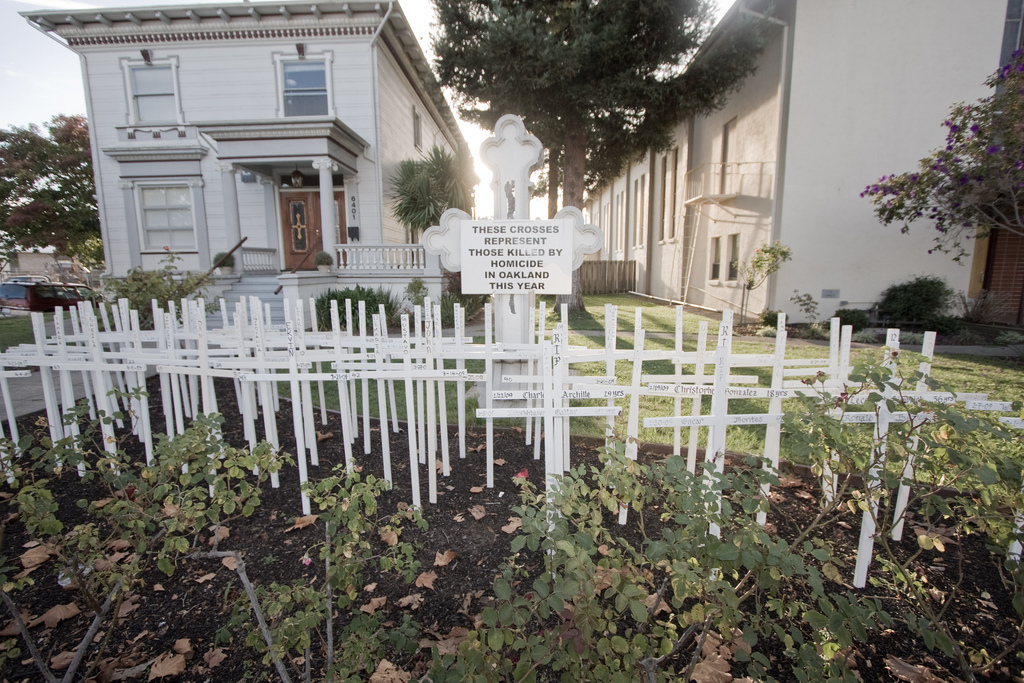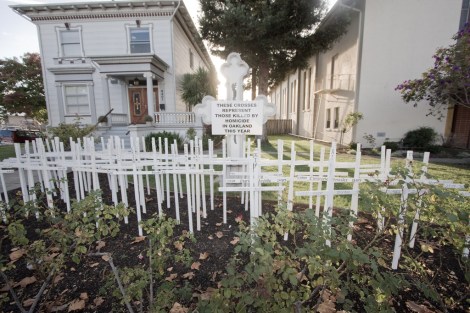Friday’s shooting at an elementary school in sleepy suburban Newtown, Conn., may have rekindled our national conversation about gun control, but that conversation consistently ignores America’s real gun crisis. Suburban rampage killings are on the rise, but they are not the country’s scourge. The vast majority of the guns are in the cities, they are neither big nor particularly scary looking, and they are killing a lot of people, old and young, every day.
On Friday, President Obama said, “Our hearts are broken.” On Saturday, Bob Herbert wrote, “Our hearts should feel broken every day.”
But let’s start here: Over the past few years, violent crime has gone down, way down, across the country. The national murder rate has dropped to mid-1960s levels, and total violent crime is about at the early ’70s. In the intervening decades, Americans fled the cities with a renewed vigor, seeking a safe life for their kids in the suburbs (it’s part of why some demographers think young people will do that again). But this new drop was not due to the safe suburbs. Major cities, including Boston, Los Angeles, and New York, experienced big crime reductions.
Why? No one can agree on exactly how it happened: strict policing, blight reduction, violence intervention, and youth programs, or just old-fashioned gentrification? “America and its biggest cities are becoming unquestionably safer, even in the face of the worst economic crisis since the Great Depression,” Richard Florida wrote at The Atlantic last spring. “That’s news we can all celebrate.”
The Brookings Institute noted: “While cities and suburbs alike are much safer today than in 1990, central cities — the big cities that make up the hubs of the 100 largest metro areas — benefitted the most from declining crime rates.”
Safer, healthier cities draw and keep new residents away from the unsustainable suburbs and exurbs. But while the numbers point to positive trends on the whole, they also reveal our sacrifice zones: Cities that have not been revitalized in this recent wave, where we have allowed poverty and violence to concentrate, out of sight and mind — cities that go unmentioned in the wake of mass murders like the one in Newtown, though they are actually our mass murder capitals.
While violent crime rates are down nationwide, they’re up in these places. Depending on the day, the murder rate in Oakland, Calif., where I live, is between No. 3 and No. 5 in the country. Spurred in part by the Newtown shooting, a gun buy-back in Oakland and San Francisco this past Saturday was expected to yield about 600 working weapons. But critics say it’s like “trying to empty the Pacific with a bucket.” That same Saturday morning, there was a shooting just a couple blocks from the Oakland buy-back.
Oakland, Detroit, Philadelphia, Baltimore — these are places we are looking to, in many ways, to lead us into a new future for America’s urban centers. Where things are broken, there’s a greater possibility of building new, smarter, and more sustainable infrastructure. But they are plagued. Oakland is one of America’s greenest cities — it’s No. 5 in the country for bicycle commuters, and home to a burgeoning local gourmet food movement. But Oakland’s most vibrant urban farms are yards away from its hottest killing zones.
They are, in fact, zones. The problem is contained to a poor, urban, black and brown demographic, and usually a young male one at that. It’s often brushed off as “thug on thug” crime. This is what we expect of cities, and so long as the blood spilled just doesn’t trickle out, we accept it.
Though they constitute 15 percent of the child population, black children and teens make up 45 percent of total youths felled by guns. On the whole, an average of five to six children and teens are murdered with guns every day. About 40 percent of inner-city residents may suffer from symptoms of post-traumatic stress disorder, though it’s really perpetual traumatic stress disorder. At some points, American urban violence has been so dangerous the Centers for Disease Control and Prevention has advised entire communities not to go outside. These communities are terrorized on a daily basis.
But until gun violence touches quiet suburbs like Newtown, described often by shocked residents and reporters over the last few days as “quiet” and “quaint,” we allow it.
“Death by gun clearly reflects the class divides which vex America, being substantially more likely in poorer, less advantaged places,” writes Florida. “And this concentrated nature of gun violence makes it easier for those in more affluent and sheltered places to ignore its consequences.”
In 2001, Tim Wise wrote of suburban rampage shootings: “What went wrong is that white Americans decided to ignore dysfunction and violence when it only affected other communities, and thereby blinded themselves to the inevitable creeping of chaos which never remains isolated too long.”
Cities are our future, but they’re dying in more ways than one. This is not, in a word, sustainable.
Where do the solutions lie? As America is grappling with the Newtown massacre, semi-automatic rifles seem like a reasonable scapegoat. But they’re responsible for fewer killings than knives. The vast majority of urban murders are perpetrated by handguns obtained illegally. If our response to gun violence is simply an assault-weapons ban like the one that lapsed in 2004, we will make no impact on America’s real murder epidemic.
Massacres like the Newtown shooting are unusual in puncturing our own national desensitization and paralysis when it comes to gun violence. A conversation about gun control which only addresses the rampage killings in the suburbs and ignores the death in the cities — this is a conversation we can no longer afford.




